- TOP
- INFORMATION
- Transportation in Japan: Buses
Transportation in Japan: Buses
Buses
Bus Types and Descriptions
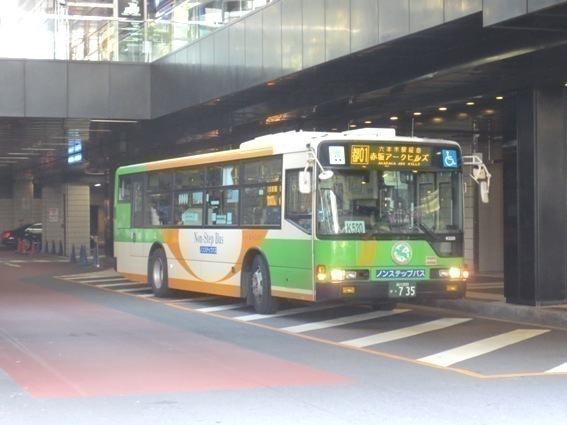
There are different types of buses in Japan: fixed-route buses that service urban areas, tour buses that go to tourist destinations, and long-distance highway buses that run between major cities. See below for the differences between fixed-route and tour buses.
● Fixed-route buses
- Used by ordinary passengers to go to work, school, shopping, etc.
- Flat fares are the norm in large cities but depend on the number indicated on numbered tickets issued when passengers board
- Have little cargo space
● Tour buses
- These buses have tour guides on board and are well-suited to tourists as they often provide guidance in multiple languages
- Some buses travel to tourist sites for a flat fair while others take passengers from an airport to different stations or airports after stopping at hotels or tourist sites
Fixed-Route Buses
Fares, Boarding, and Exiting
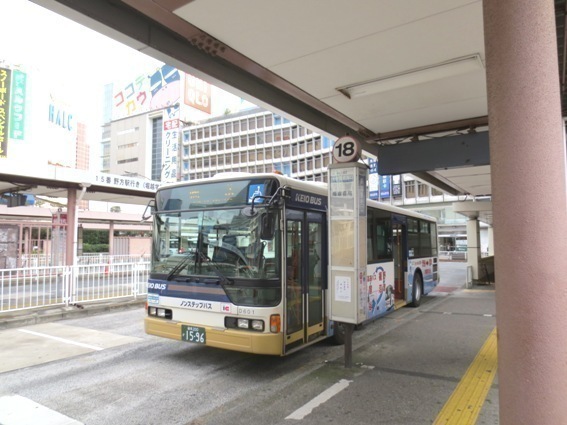
You can use many bus routes in large cities for a flat rate. You use cash or an IC card as payment after boarding from the forward door. When you wish to get off, signal to the driver by sounding the buzzer just before arriving at the stop. Get off from the rear door.
For routes in regional or suburban areas, buses usually charge based on distance. These buses are boarded from the rear door and passengers take a numbered ticket or have the location stored on their IC card. Just before arriving at your stop, tell the driver you wish to stop by sounding the buzzer. Before stepping off the bus, put your payment into the fare box next to the driver. These buses are usually exited from the forward door, but this depends on the area.
Forward-Boarded Buses
① Boarding
The following explains how to board a front-boarded bus where fare is paid upon boarding. This applies to municipal buses running throughout Tokyo. You can confirm the bus route and number, final destination, and transit points by looking at electric signboards on the front and side of the bus. Board these buses using the forward door. The rear door is only for people getting off.
② Paying the Fare
Enter the bus from the front doors and drop your fare into the fare box or touch your IC card to the IC screen. If you need change, use the change machine installed on the bus near the fare box.
③ Manners for the Bus 
Feel free to sit should you find an open seat. However, there is designated seating available for the elderly and those with disabilities. Never stick your head or arms out of the windows or move around while the bus is in motion.
④ Pressing the "Get Off" Button 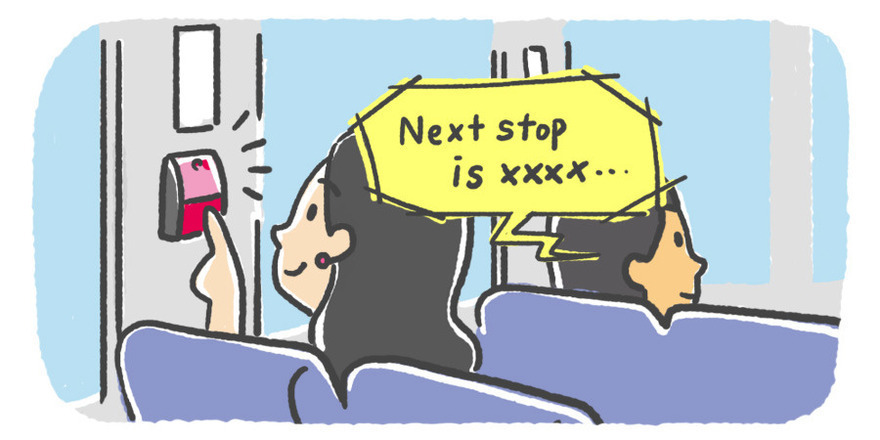
The PA system on the bus will tell passengers what stop is next. Some buses provide announcements in multiple languages. When you hear the name of your stop, promptly push the button with the Japanese word おります (orimasu; get off) button to let the driver know you'd like to get off the bus at the next stop. You will hear a sound and the PA system will announce, "tsugi tomarimasu" (stopping at the next stop), which will also be shown on the signboard. The bus will not stop unless passengers signal to the driver in this way. If you forget to press the button or cannot find one, tell the driver that you wish to get off at the next stop.
⑤ Getting Off
When the bus arrives at your stop, wait until it comes to a full stop before exiting from the rear door. When getting off a bus, watch out for pedestrians and cyclists going by.
Rear-Boarded Buses
① Boarding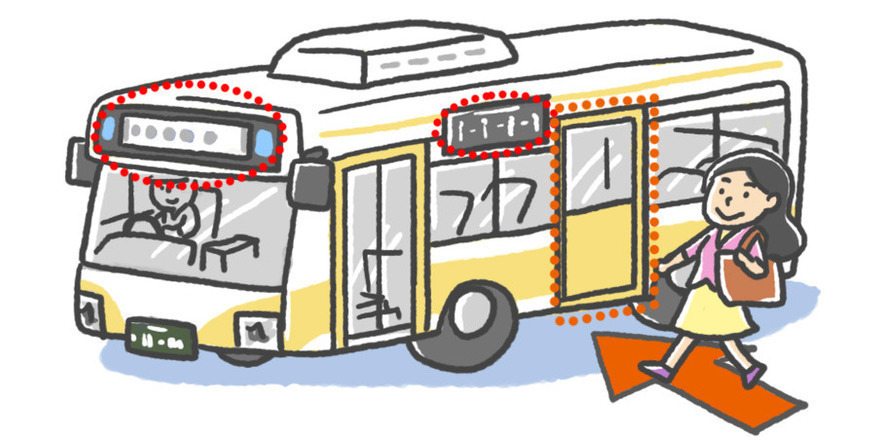
The following explains how to board Kyoto city buses and other buses that are boarded at the rear with fares paid afterwards. Board from the rear door. The forward door is only for people getting off.
②Taking a Numbered Ticket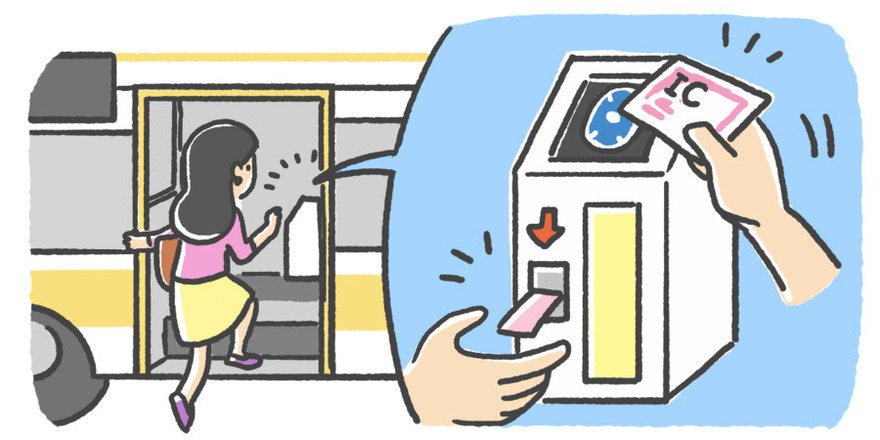
Bus fare is not paid when boarding these buses. If you see a machine dispensing tickets with numbers printed on them, take a ticket. These indicate at which number bus stop you got on the bus. If using an IC card, touch your card to the sensor.
③ Manners for the Bus 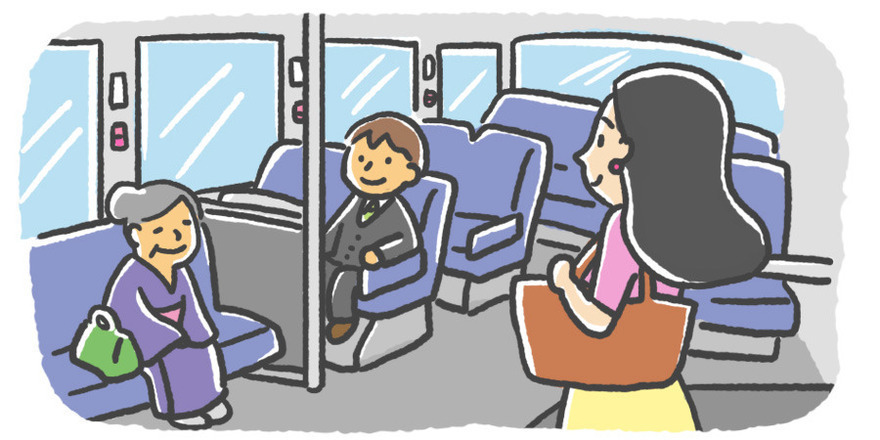
Feel free to sit should you find an open seat. However, there is designated seating available for the elderly and those with disabilities. Never stick your head or arms out of the windows or move around while the bus is in motion.
④ How Much Is the Fare?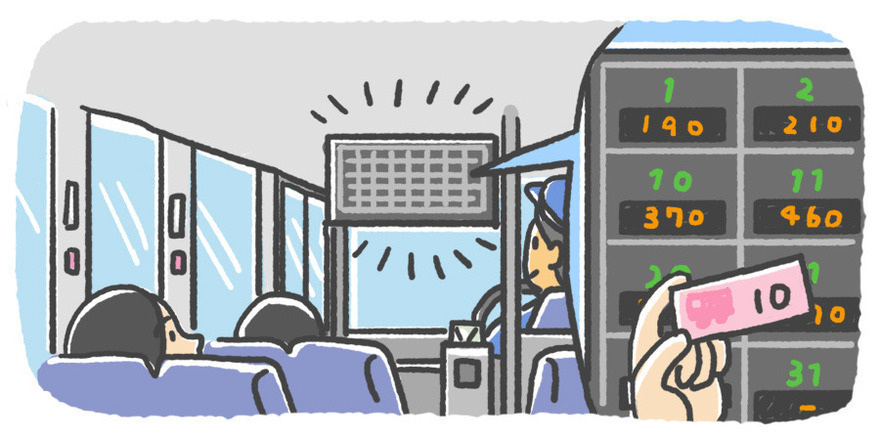
You can find a list of fares at the front of the bus. If numbered tickets are not used, fares will be written below the word なし (nashi, meaning "none." If you have a numbered ticket, be prepared to pay the fair indicated under the number on the ticket. Tell the driver if you lose your numbered ticket.
If you need change, there is a money changer attached to the fare box next to the driver. Note that bills in large denominations (¥10,000 bills, etc.) cannot be changed. Some buses provide change automatically when you pay your fare.
⑤ Paying the Fare
When the bus comes to a complete stop at a bus stop, put your numbered ticket and money into the payment slot if paying with cash. If using an IC card, touch your card to the sensor.
⑥ Getting Off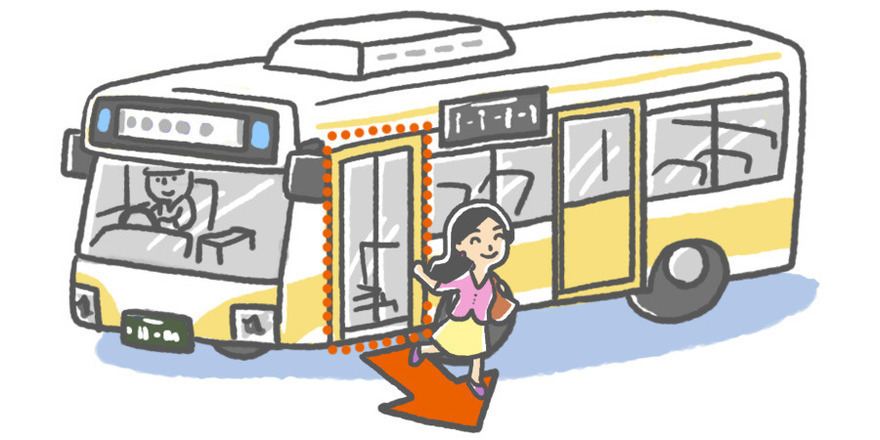
Exit the bus from the forward door. The rear door is only for those boarding the bus.
Highway Buses
Highway Buses
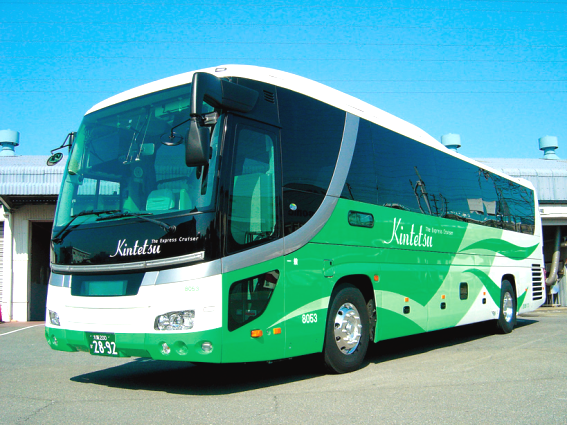
Highway buses run between major cities or between airports and city centers and travel on expressways. To ride a highway bus, you will need to make a reservation in advance online or purchase a ticket from a ticket machine at a bus terminal and show it to the driver or station attendant. These buses have cargo spaces where passengers can store large suitcases while in transit.
Many highway buses that run between cities offer an overnight service. They are equipped with toilets and large seats, and it is expected that passengers will sleep along the way. There are waiting rooms at the departure and arrival areas, and an increasing number offer facilities for resting or fixing makeup.
Places such as Lake Kawaguchi, Lake Yamanaka, Gotenba at the foot of Mt. Fuji, or Okuhida in Gifu Prefecture can be accessed by railway but take time to get to. Highway buses run between these places and Tokyo (Shinjuku), Nagoya, Narita Airport, and Haneda Airport. When traveling to a remote tourist destination, highway buses offer the convenience of not having to transfer—unlike with shinkansen or limited express trains.
For more on how to buy tickets, please refer to the home pages of these bus companies:
WillerExpress
VIP LINER
Bus-Channel
Japan Bus Pass
Willer Travel offers Japan Bus Passes that allow unlimited travel on highway buses that are valid for up to two months. You can buy either a 3-day pass (¥10,000) or 5-day pass (¥15,000). These buses run on more than 20 highway bus lines nationwide.
THIS ARTICLE IS BASED ON INFORMATION FROM 01 06,2016








